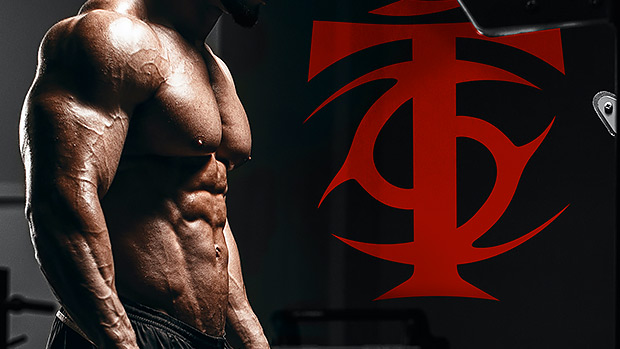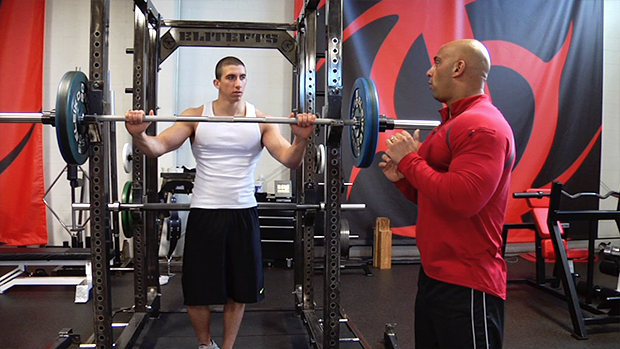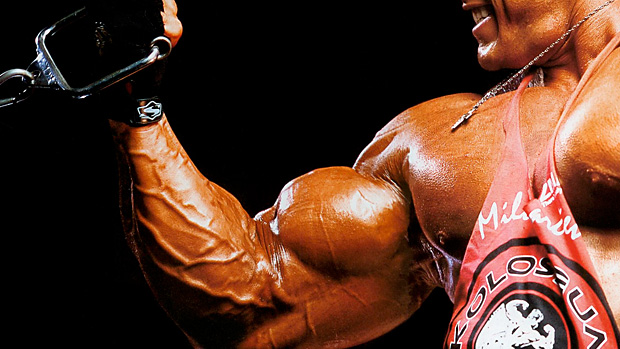What's Your Core, Really?
"Core strength" gets thrown around without much thought, but what does it actually mean? It's simply the ability to maintain spinal alignment under load.
In most cases, this is demonstrated by keeping your pelvis and ribcage in alignment while some force tries to perturb them. So if we use this as a definition of core strength, then the core must be made up of ALL the muscles that maintain spinal alignment.
In addition to the abs and obliques, we're looking at the lats, glutes, spinal erectors, upper back, and other musculature – all of which need to work in unison.
People either think, "Just squat and deadlift, bro," or they want you to spend hours on the floor doing ab-centric exercises.
The truth is, yes, squats and deadlifts (done correctly) are a good stimulus for improving core strength, but you'll likely need some core-dominant work to keep progressing. Isolation exercises have their place, but you don't need to be doing excessive quantities all year long.
Your core is the biggest "power leak" you'll have in your main lifts, so improving it is always a smart choice. There's no such thing as "too much" core strength.
Think about it like this: Fewer power leaks will lead to more weight lifted, which will lead to more gains in strength and hypertrophy. What's not to like about that?
The ability to provide as much support to your spine and midsection is also key to injury prevention, and nothing derails progress like injuries.
Here are some methods that'll help you improve core strength without adding a bunch of extra work.
Choose variations of your main lifts that place more emphasis on your core and postural strength. This is the simplest strategy.
The upside? You don't add any workload to your plan. The downside? Stepping away from your main lifts may cause your performance to drop temporarily. But don't panic, it'll soon return and likely be better off.
Here are some of my favorite variations for emphasizing core strength:
Squat Variations
Zercher Squat
It's the squat for all occasions. Anterior loading allows you to stay more upright, which means more abdominal loading. You hold the bar in the crook of the elbows, which also places a huge demand on the upper back to keep the bar close. To top it off, the bar is going to sit over your diaphragm, inhibiting your breathing, and therefore bracing, ability. And – bonus – it works your biceps.
Frankenstein Squat
The most humbling squat variation. The fact you can't grip the bar to stabilize it cranks up the intensity here. The upright positioning makes this one of the most quad-dominant squat variations, so it's great for those who have a lot of forward lean in their squat. It also scores even higher than the front squat on the auto-asphyxiation index.
Hip-Hinge and Deadlift Variations
Sweeping Floating Deadlift
Both floating and sweeping deadlifts are good options. But combining them is sort of a 1 + 1 = 3 scenario. The forward band means the lats have to work overtime. Combine this with a pause at "floor" level, and every muscle that locks your torso into position has to work hard together.
Zercher Good Morning
Combining the Zercher position with the good morning is a great way to create a "core dominant" hip-hinge movement. Plus, you have the benefit of less shear stress on the spine, more upper back work, and you don't have to worry about the bar moving around on your back.
Overhead Press Variations
Savickas Press
This removes the cheating mechanism of leaning back during overhead pressing and punishes you nicely for getting the bar out of line. Adding hanging bands is a personal favorite. (More on that later.)
Tall-Kneeling Landmine Press
The "tall-kneeling" posture is a great choice for focusing on rib and hip alignment. The glutes, obliques, and abs all have to work to maintain the stacked position without any support. Landmine pressing is also a great choice for anyone with shoulder issues or impaired mobility overhead.
Bench Press Variations
T-Spine Bench Press
Set up with only your upper back on the bench and do an isometric glute bridge while pressing. It means more stabilization work for your upper back and is great for those who rely on a large arch while benching (or suffer from pancake butt).
One-Arm Dumbbell Press
When focusing on core strength and stability, do these with the shoulder and hip of the working side OFF the bench. This means you can't have a weak link from the foot up to the shoulder on the working side. Try not to fall over and drop a dumbbell on your face.
Pulling Variations
90-90 Position Pullover
To keep tension on the lats and get the benefit of a loaded stretch, avoid letting the ribcage rise through the movement. The 90-90 position makes it easier to be aware of your ribcage and your lower back. It also hits the abs heavily.
Fisherman Dumbbell Row
Lots of anti-rotation demands here! Avoid overextending through your shoulder at the bottom position and keep your hips and shoulders level throughout.
If you want to increase the core demands of your training without altering your exercises, try one of these:
Hanging Band Technique (HBT)
This is a great method that's accessible to most people. Just use resistance bands to suspend some form of weight (plates, kettlebells, or smaller, weaker humans) from both sides of the bar.
The oscillations of the suspended weights will increase the stability and core demands. This technique works well with squat and pressing variations. These also work nicely with slower tempos or pauses. I've used these as a warm-up prior to maxing out or heavy work since it tends to dial in the movement pattern nicely.
Weight Releasers

Weight releasers allow you to suspend weight from the bar. The hanging weights then come off during the eccentric/negative (at whatever point you choose), leaving you with a lighter load on the concentric.
You get the increased core demands from the oscillations of the hanging weights, plus it enables you to overload the eccentric.
If walking out your max front squat with 40-plus pounds hanging from each side doesn't get your core firing, nothing will.
Specialty Bars

You now have various bars specifically designed to bend and distort under load (like tsunami and earthquake bars) that offer similar benefits to the HBT. These can be great to cycle in and out of your training to keep stability and core strength on point.
If you're feeling lazy and want extra core work with as little effort or alteration to your program as possible, this is the option for you. The best way to "sneak" it in is by simply switching out your normal posture/position for something like one of these:
Tall-Kneeling
You're on both knees, and you want knees, hips, and ribs to be directly stacked over each other. High core demand generally lowers the load used significantly.
Half-Kneeling
You're on one knee with one leg out in front for support. There's less core demand than with the tall kneeling position, but it allows more loading. It's good for emphasizing anti-rotation.
90-90 Position
You lay back with hips and knees flexed at 90 degrees. Generally, it doesn't affect loading too much.
These postures tend to lend themselves to different types of movements, so it's worth experimenting, but here are a few of my favorites:
Tall-Kneeling Straight-Arm Pulldown
Tall-Kneeling Triceps Pressdown
Try attaching bands to the straight bar for more ROM and instability.
Half-Kneeling One-Arm Cable Row
Half-Kneeling Dumbbell Shoulder Press
This can be done single-arm to increase anti-rotation work.
Half-Kneeling Pallof Press
90-90 Serratus Crunch
Yep, another "ab" movement (sorry), but when done with a slow tempo, it hits HARD.
On top of improving core strength, they can also increase strength, hypertrophy, and work capacity, depending on how you program them.
All loaded carries are worth doing, from standard farmer's walks to Zercher carries. There aren't really any "bad" choices. What's more important is HOW you do them. We want a slow tempo focusing on maintaining maximal muscular tension and the stacked position through the ribcage and hips.
If you're doing loaded carries for core development, there's no point using a fast tempo and a forward lean to increase momentum. The goal is to make it as hard as possible without adding more weight.
Zercher Carry
When doing unilateral carries, like suitcase carries, you want to keep that stacked/tall torso position. If you're doing these and just leaning to the side for leverage, you're not getting the benefits.
Suitcase Carry
Getting an iron-clad midsection doesn't have to be boring, so now you've got no excuse not to do it.





